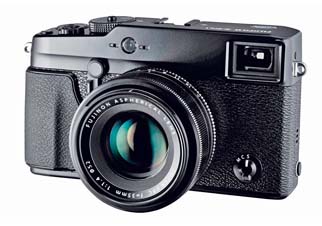Undoubtedly Mirrorless System Cameras have now started having a firm grip on the digital camera segment and are considered to be the next big technological change. Today every manufacturer is introducing their version of the technology, which was first introduced by Olympus and Panasonic jointly in 2008. As the name suggests, the technology allows camera makers to skip the mirrors, prisms and the optical viewfinder to reduce the size and the weight of the camera.
Companies like Sony, Pentax and Samsung quickly jumped on to the bandwagon but Fujifilm, Nikon and Canon preferred to wait in order to gauge the response of the consumers. But with the growing popularity of the segment and an increase in the acceptance level of the technology, the combined share of the Japanese market for Canon and Nikon has fallen by 35%, while Sony’s share seems to have doubled, according to estimates at research firm BCN Inc. Mirrorless cameras accounted for 40.5% of SLR sales in Japan in July, surging from 5% in early 2009, according to BCN.
With advancements in
the smartphone technology, the age old debate of camera phones versus digital
cameras has gained momentum again, and this is one of the trending topics at
Photokina this year. According to analysts, the camera market which was already
facing competition from camera phones will now have to gear up for competition
internally from the mirrorless segment itself.
According
to Camera & Imaging Products Association (CIPA), the forecast for total
shipments (the cumulative total of shipments from January to December) of
digital cameras in 2012 is 117.30 million units, a year-on-year increase of
1.6%. Digital cameras with built-in lenses are predicted to reach approximately
99 million (a year-on-year decrease of 0.8%) and globally, sales of mirrorless
cameras surged fivefold from 2.1 million units in 2010 to 18.30 million units
now.
Of particular note is
the expectation that the rapid growth trend will continue in the category of
digital cameras with interchangeable lens for markets outside Japan, with
shipments of 16.70 million, a year-on-year increase of 17.6%, anticipated.
The total shipments of
lenses for interchangeable lens cameras continue their marked growth in step
with the expanding market for digital cameras with interchangeable lenses and
the broad range of product offerings, with a forecast for 2012 of shipments of
30.90 million units, a year-on-year increase of 18.8%.
The
Japanese market is an early adopter of most technologies. Unfortunately, the
mirrorless segment has still not managed to impress the consumers outside of
Japan, allowing mainline traditional DSLR numbers in favour of manufacturers
not present in the same category. Canon currently owns an estimated 45% share
of the global market for DSLRs, and Nikon holds about 30%, according to
researcher IDC. As per reports Canon earned 114.8 billion yen ($1.5 billion) in
profit by selling 5.9 million traditional DSLRs last year, four times the
profit it made from compact cameras, while Nikon earned more from SLRs and
lenses last fiscal year than with any other product, according to Nomura
Holdings.
Canon forecasts that
the sales of the DSLR camera will increase 24% this year, helping offset the
fallout from the factory disruptions caused by Japan’s March 11 earthquake and
tsunami.
Photokina this year
however is witnessing great action in the mirrorless sphere with launches from
various manufacturers in the same segment. Canon has entered the mirrorless
interchangeable lens camera space, with the EOS M. Despite its compact size,
the camera has an 18-megapixel APS-C sensor and a Digic 5 image processor,
which were previously found only in the company’s DSLRs. The EOS M also offers
a beginner-friendly touchscreen interface which is similar to the one found on
the EOS 650D.
Fujifilm on the other hand is showcasing the X-E1, the second interchangeable camera from the brand this year. Following hot on the heels of the highly acclaimed X-Pro1, the X-E1 boasts the same 16 megapixel APS-C X-Trans CMOS sensor with top-class OLED electronic viewfinder, a smaller body with built-in flash and the same X mount for the Fujinon XF lens range. In addition, Fujifilm will expand the lens line-up from three to five in the autumn, and up to 10 in early 2013.
Sony is also showcasing
the NEX 6 that appeals to committed DSLR users who need to travel light without
compromising picture quality. Offering big-sensor picture performance in a
compact body, the new camera also makes an ideal option for step-up
photographers looking to significantly expand their creative options.

